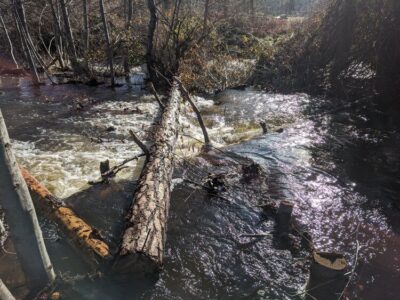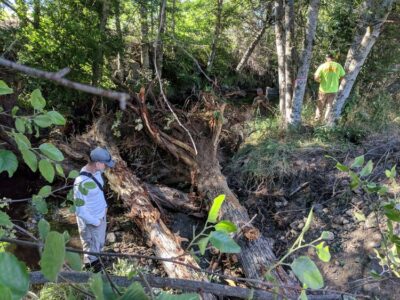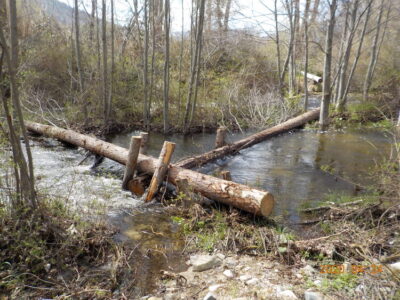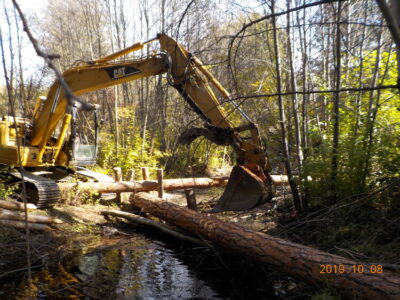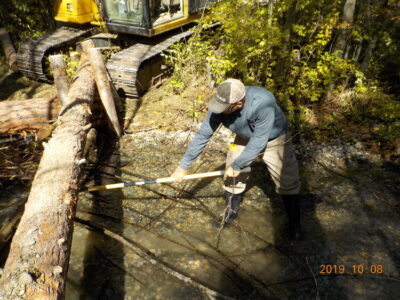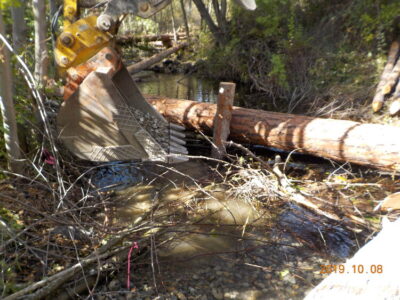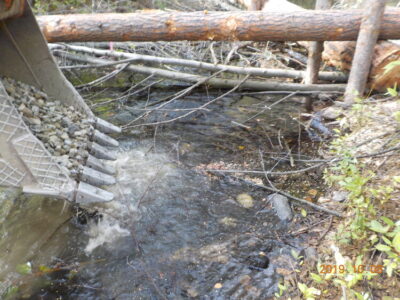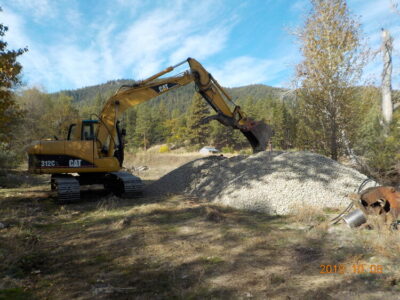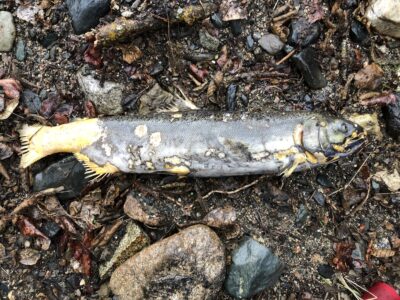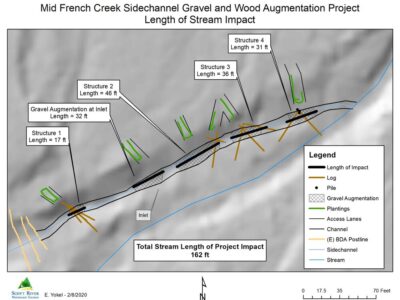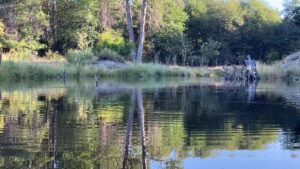This project is located in a stream reach with multiple other restoration projects upstream and downstream, which offers synergistic benefits. In this project, engineered log jams were constructed, spawning gravels were introduced and riparian vegetation was planted within the disturbed areas. The strategy for this project is twofold; provide immediate habitat benefits with wood and spawning gravel introduction, while initiating natural processes to create long-term fluvial function improvements.
This project is guided by the “Scott River Spawning Gravel Evaluation and Enhancement Plan” completed by Cramer Fish Sciences in 2010) and both California Department of Fish and Wildlife (CDFW) and National Oceanic and Atmospheric Administrative (NOAA) recovery plans. Extensive spawning ground surveys and data gathered during on-going fish and physical habitat monitoring in the Mid-French Creek reach also inform the project design. Multiple, extensive anthropogenic impacts have severely altered the geofluvial conditions in French Creek, with subsequent alteration of sediment supply and transport. Among many other consequences, these changes have resulted in degraded spawning conditions for Coho, Steelhead and Chinook salmon, because of reduced substrate heterogeneity.
Project effectiveness monitoring activities includes photo points, water temperature, fish utilization and both gravel and tree movement.
This phased project is funded by the Coho Enhancement Fund which is administered by the National Fish and Wildlife Foundation and the United States Fish and Wildlife Service. This project is located on private property.
